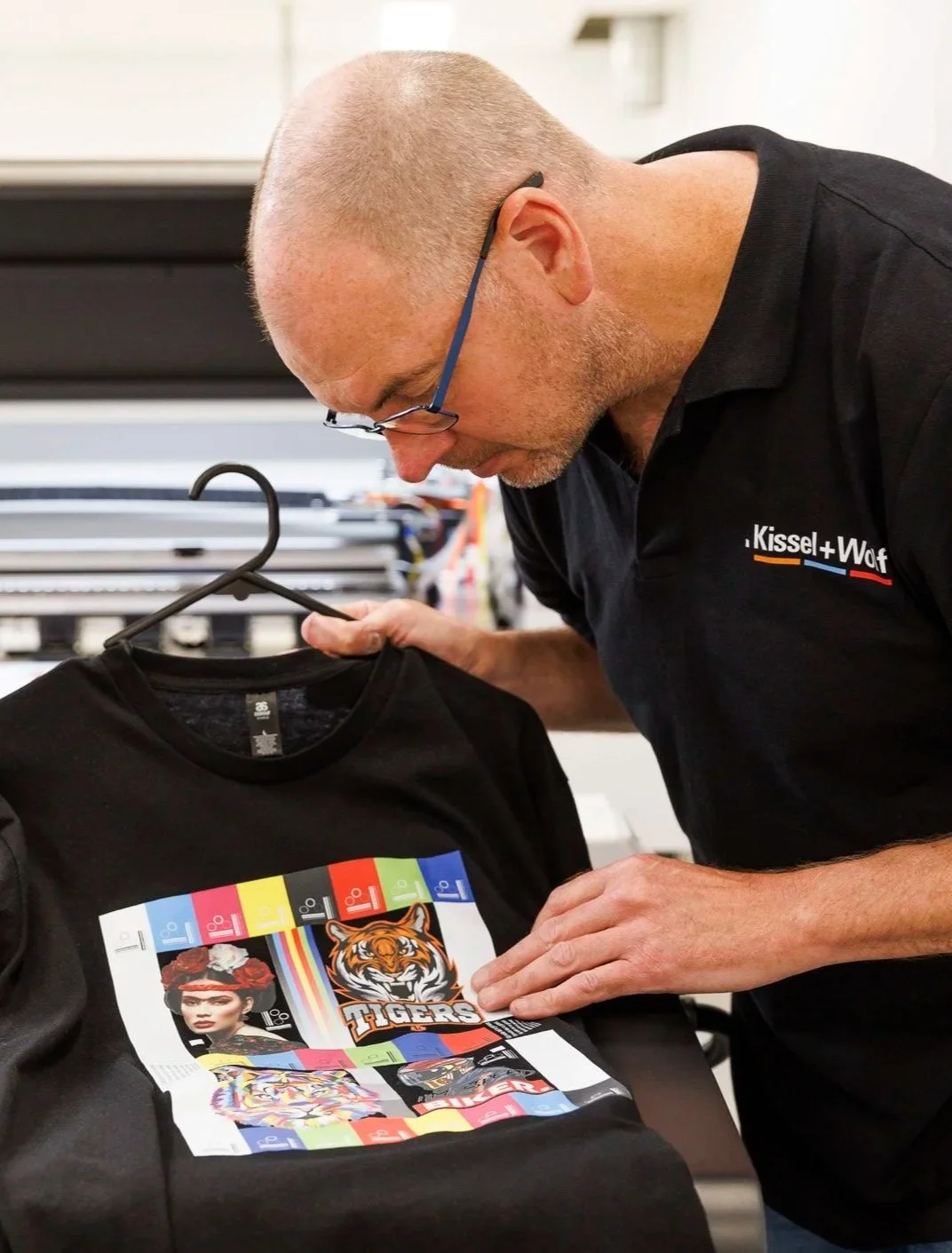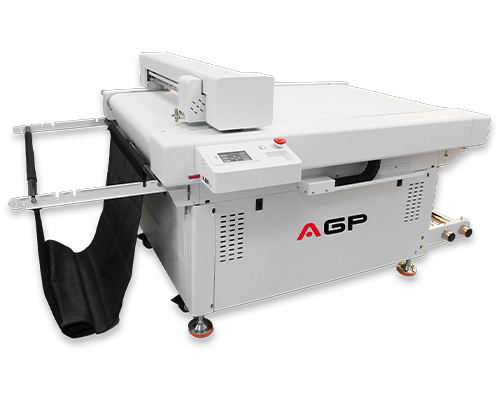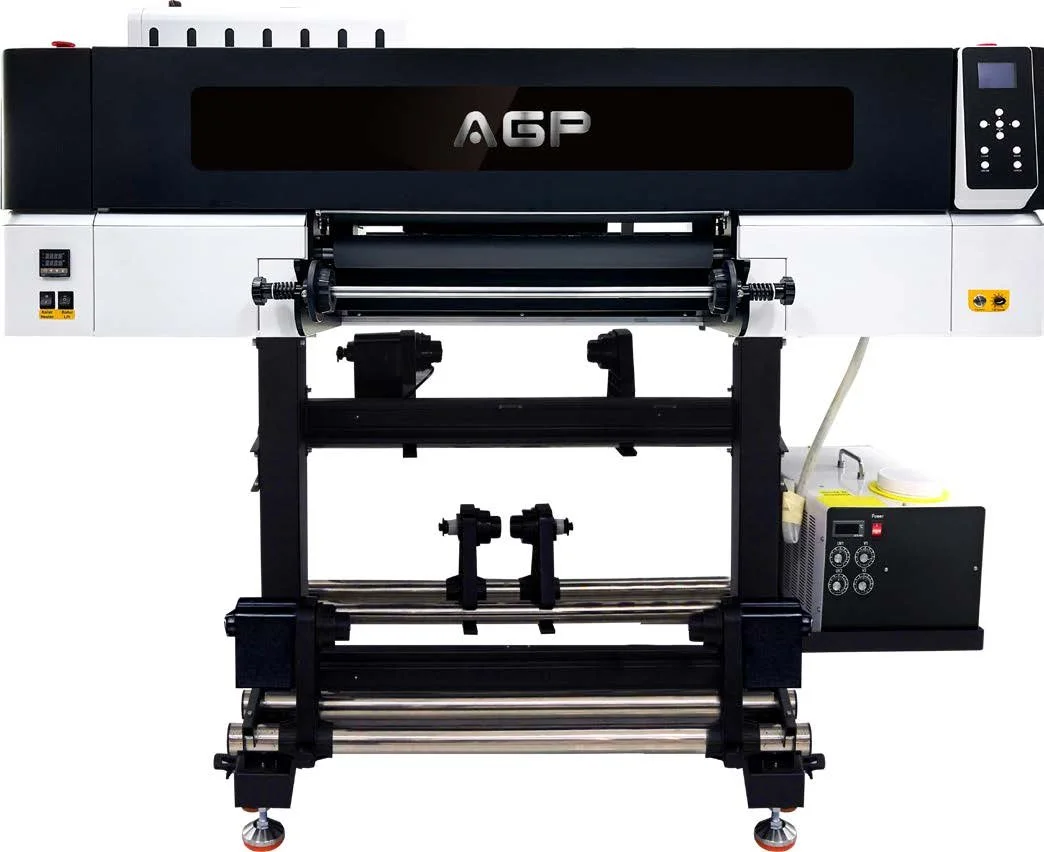Clarifying the DTF Meaning: Everything Print Businesses Need to Know
In today’s competitive print and apparel market, knowing what Direct to Film / dtf meaning is essential. DTF is changing printing by enabling high-quality, multicolour transfers on almost any fabric. This guide explains what DTF is, how it works, its benefits and drawbacks, and how Kissel+Wolf Australia helps print shops and clients use DTF profitably.
Kissel+Wolf Australia Direct to film Inspection
1. What Is DTF?
Definition
DTF, or Direct to Film, is a printing method in which designs are printed onto a special film, coated with adhesive powder, then transferred by heat press onto textiles or substrates.
After printing, the film is cured (or partially cured) so the adhesive binds, then heat and pressure apply the design to the garment.
The film is peeled off (hot-peel or cold-peel) leaving the ink + adhesive adhered to the fabric.
How the DTF Process Works
Prepare artwork with layers (CMYK + white underbase) using RIP software
Print the design onto the DTF film
Apply adhesive powder to wet ink
Cure or partially dry to bind adhesive
Press the film onto garment under heat/pressure
Peel the film off (hot or cold) leaving the print
(Optional) Post-press to improve durability and hand feel
2. Why “DTF” Is Gaining Traction in Australia’s Printing Industry
Fabric & Colour Versatility
Thanks to a white underbase, DTF can handle light and dark garments with strong colour fidelity.
It works across a broad range of fabrics: cotton, blends, polyester, fleece, denim, etc.
Unlike some Direct to Garment (DTG) workflows, DTF often avoids the need for extensive pre-treatment.
Better for Small to Medium Runs
Lower setup cost than screen printing makes DTF more economical for short runs or small batches.
Ideal for custom, on-demand, or seasonal designs, where you can avoid high wastage and inventory costs.
Quality, Durability & Consistency
When done properly, DTF prints resist cracking, peeling, and fading, even after many washes.
The film-based process allows precise control over ink laydown, registration, and layering.
Vibrant colours and sharp detail are hallmarks of good DTF output.
3. Advantages & Challenges of DTF
Key Advantages
Flexibility across many garment types and colours
Cost-effective for shorter runs and lower waste
Speed & turnaround — fewer steps than traditional analog methods
Quality control via in-film printing before transfer
Local control — full production in-house without outsourcing
Common Challenges & Pitfalls
High initial investment in printer, oven, shaker, and accessories
Handling adhesive powder - consistency, static, dust issues
White ink management (settling, clogging)
Environmental sensitivity: humidity, cleanliness, curing accuracy
Film peeling issues if parameters (heat, time, pressure) are off
Hand-feel and thickness - prints may feel slightly elevated compared to embedded techniques
Mistakes to Watch For
Under or over-curing the adhesive, leading to cracking or poor adhesion
Poor white ink circulation leading to colour inconsistency or nozzle problems
Inadequate RIP setup or misconfigured underbase/choke settings
Using wrong film type or mismatched fabric
Skipping quality tests (wash tests, peel tests)
4. DTF vs. Other Printing Methods: A Comparative Perspective
Screen Print
Approach: Ink through stencils
Strengths: Excellent for large volumes and cost per unit
Limitations: High setup, colour complexity, not ideal for small runs
Sublimation
Approach: Dye into fabric (for polyester)
Strengths: Soft hand-feel, embedded print
Limitations: Only works on polyester or coated surfaces; not suited for cotton or dark colours
DTF
Approach: Print to film + adhesive + heat transfer
Strengths: Works on light/dark, flexible runs, multicolour
Limitations: Requires powder/curing, film peel, maintenance
DTG
Approach: Ink directly onto garment
Strengths: Soft feel, no intermediary transfer
Limitations: Limited on dark fabrics, needs pre-treatment, slower on mixed fabrics
5. Real-World Applications of DTF in Australia
Branded apparel (T-shirts, hoodies, jackets)
Sportswear and team uniforms (logos, mascots, numbers)
Promotional merchandise (bags, caps, accessories)
Specialty placements (labels, sleeves, collars)
On-demand and eCommerce custom products
Sampling, seasonal lines, micro-runs
6. How Print Businesses Can Integrate DTF into Their Workflow
Assess your current volumes and test with a small DTF setup
Choose and configure RIP software and colour profiles
Maintain clean, controlled environment (temperature, humidity, dust)
Train operators in powder handling, peel timing, curing control
Perform quality assurance — wash/peel/adhesion tests
Expand only when consistency and margins are proven
7. Kissel+Wolf Australia: Your DTF Partner & Advantage
When it comes to turning the dtf meaning from concept to profit in Australia, Kissel+Wolf Australia stands out as a leader in DTF adoption, education, and support.
Kissel+Wolf is the exclusive distributor for AGP Textek’s DTF and UV DTF systems in Australia & NZ, offering end-to-end solutions and support.
We carry premium AGP DTF printers (e.g. T652, T653, T654 models) with CMYKRGB+White setups, auto white ink circulation, and compatibility with major RIP software (Caldera, Flexi)
Our powder shakers, curing ovens, and accessories are designed to integrate seamlessly into DTF workflows.
Local servicing, technical support, training, and consultation are our core strengths - critical in avoiding long downtime and ensuring print quality.
Our partnership with AGP Textek helps deliver advanced DTF technology and technical support tailored to the Australian print environment.











